
19.12.2022
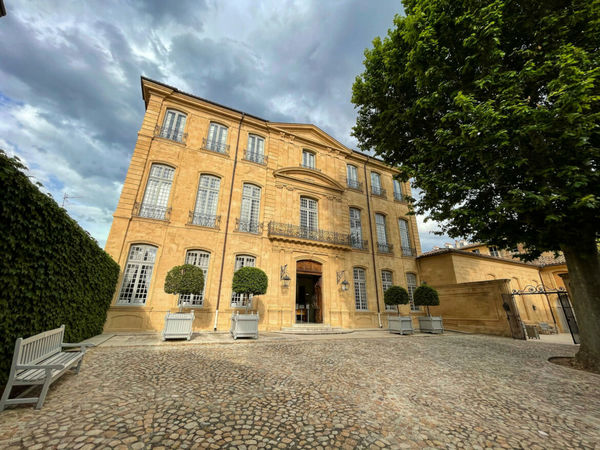
16.09.2021
The Hôtel de Caumont is one of the most prestigious residences of Aix’s heritage, in the heart of the Mazarin district.
It is one of the rare addresses that allowed their owners to show their aristocracy.
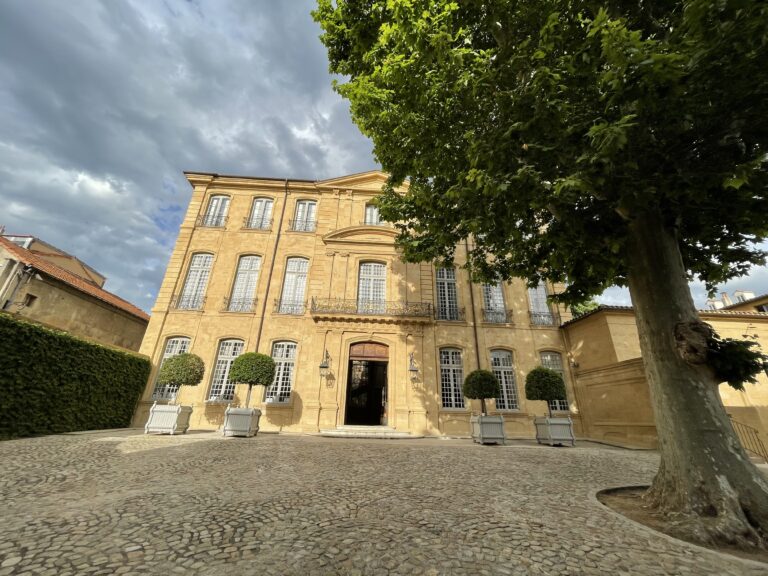
In the 17th century, the city of Aix-en-Provence experienced strong demographic growth. Archbishop Michel Mazarin, brother of the famous cardinal, undertook a new expansion of the city by creating the Mazarin district, which became the scene of considerable ambitions – religious, political and private. It was organized in a checkerboard pattern with the Place des Quatre-Dauphins at its heart.
In 1715, François Rolland de Réauville, Marquis de Cabannes, wished to build a private mansion worthy of his position as second President of the Court of Accounts in Aix-en-Provence.
He therefore asked Robert de Cotte, Intendant and first Architect of the King’s Buildings, to draw the plans for a superb residence that would stand out from the other private mansions in the area. On April 4, 1715, work began under the direction of the Aix architect Georges Vallon.
Bereft and in debt, the de Réauville family was forced to sell the property a few years later. François Bruny de la Tour-d’Aigues, the richest shipowner, merchant and banker in Marseille, bought the mansion in 1758. It was thus named Hôtel de Bruny.
When François de Bruny died on November 22, 1772, his son Jean-Baptiste Jérôme inherited the hotel. He was a collector and a member of the Marseille Academy of Painting, and collected many works of art in his property in Aix. The Hôtel de Bruny was then the scene of memorable parties and evenings that brought together all of Aix’s good society.
In 1796, upon the death of Jean-Baptiste, the mansion reverted to his son Marie-Jean-Joseph who died shortly after. His sister, Pauline, inherited the house.
Pauline, born Bruny de la Tour d’Aigues, married Amable de Seytres, Marquis de Caumont. The Hôtel de Bruny legitimately takes his name.
In 1850, Pauline died without an heir. She named her cousin Louis-Charles de Bruny as the sole legatee of her hotel. The latter sold it shortly afterwards. Until the Second World War, the hotel de Caumont had many successive owners and its condition was deteriorating …
In 1939, when the Second World War began, the hotel had completely lost its former glory. It was then divided into several apartments held by Hélène Ardevol (1892-1976), concierge of the building and member of the Resistance. She courageously housed many Resistance fighters.
General Isenbart was the last private owner of the Hôtel de Caumont. After having undertaken the restoration of the place, for love of it, he sold it to the city of Aix-en-Provence in 1964. The hotel then became the Conservatoire de musique et de danse Darius Milhaud.
In 1990, the entire hotel was classified as a historical monument.
In 2010, to finance the construction of its new music conservatory, the City of Aix-en-Provence sold the Hôtel de Caumont to Culturespaces. A vast restoration campaign is planned, 300 years after the laying of its foundation stone…
Finally, on April 15, 2015, the Hôtel de Caumont opens its doors and hosts two temporary exhibitions dedicated to the great names of art each year. At the same time, the film “Cézanne au pays d’Aix” is shown every day. Concerts, musical performances and conferences complete the program.
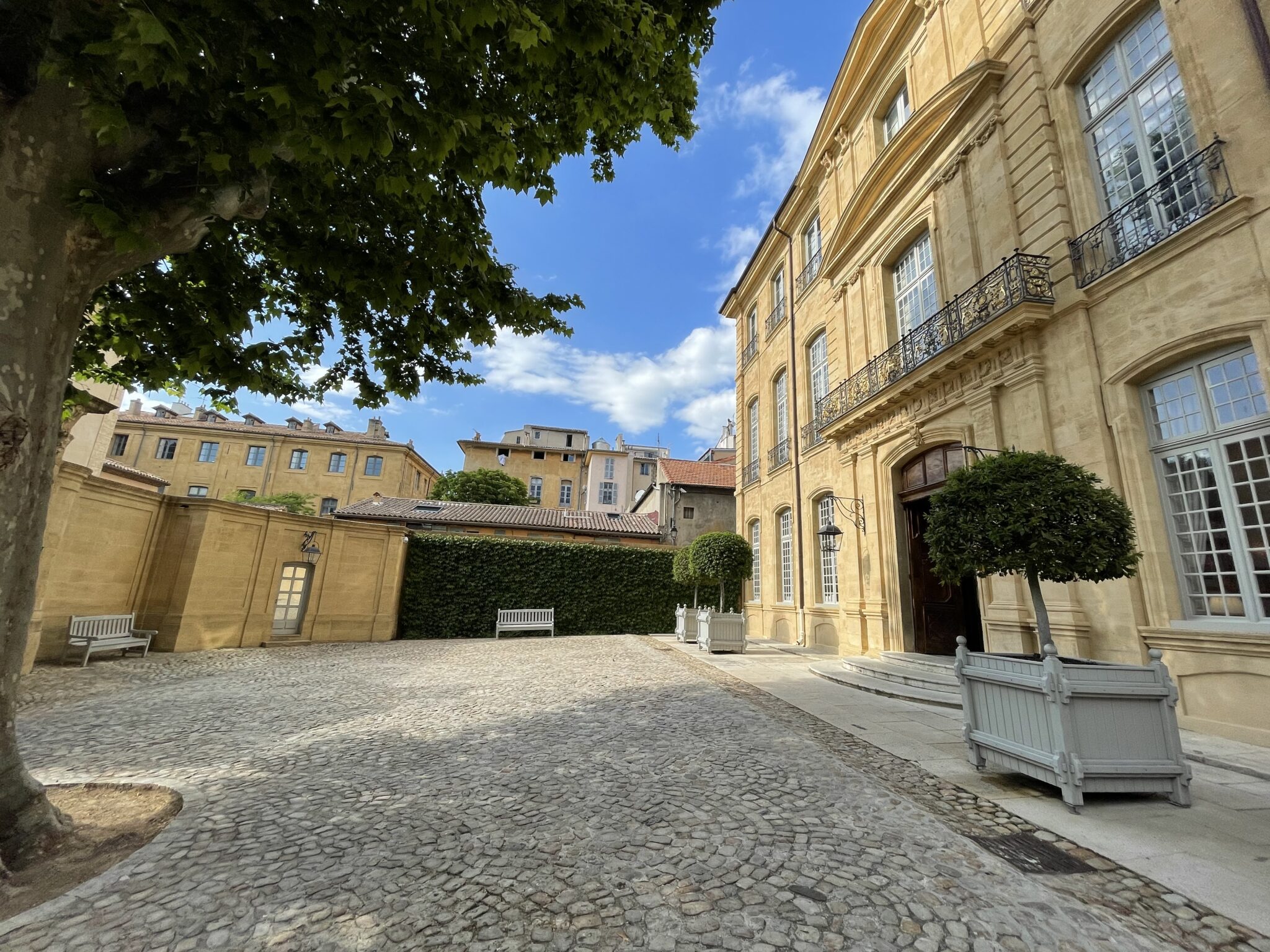
This superb residence is a hotel between “courtyard and garden”, organized according to a type of plan that appeared in Paris in the 16th century and which corresponds, on an urban scale, to the castle and its park. By the size of its conception, without equivalent in Aix en Provence, by its harmonious proportions and the classicism of its facade, it represents a magnificent illustration of the French architecture of the XVIIIth century.
The Hall, the Music Room, Pauline’s room, the Putti and the Rinceaux salons, not to mention the Grand Gallery are real architectural gems. The gardens are also magnificent. They play an essential role in allowing nature to take its place.
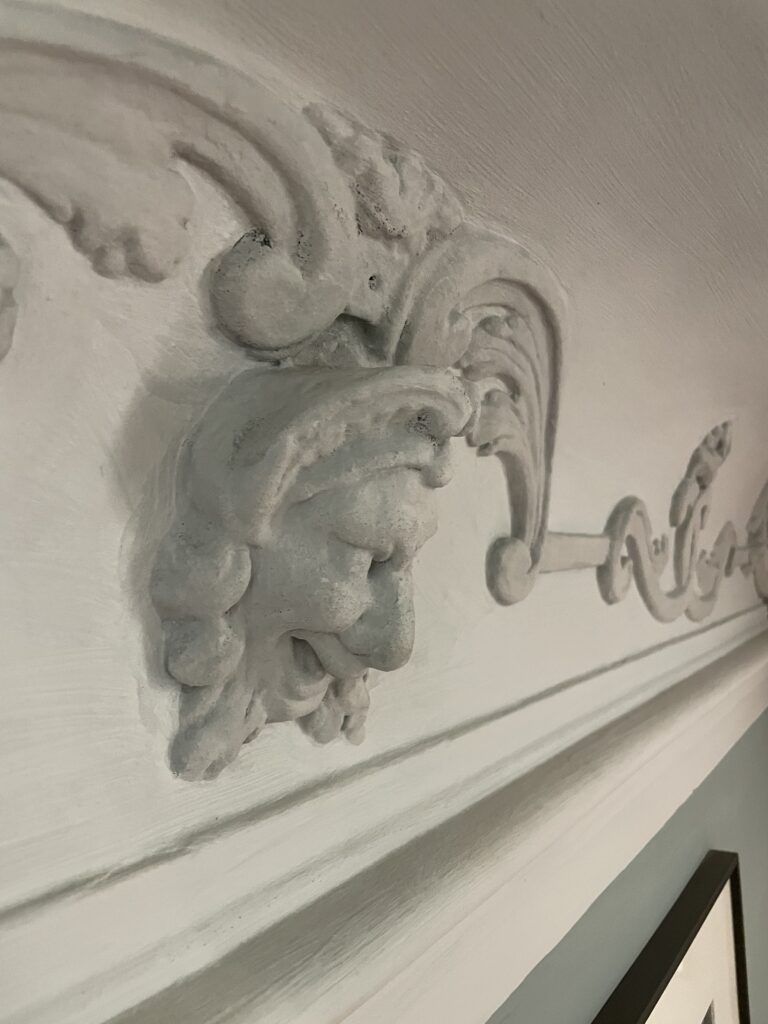
Architectural jewel of the Age des Lumières, property of the city of Aix-en-Provence since 1964, the Hôtel de Caumont has, over the course of its history, undergone various unsightly modifications that have denatured it. Demolitions of ceilings and fireplaces, destruction of some gypseries … It was time to act to restore its past glory to this building classified as a historical monument.
The company Culturespaces bought it in 2013 to turn it into an art center and undertook extensive work. The intensive care has quickly begun under the leadership of Mireille Pellen, Heritage architect in charge of the site. The operations began with the restoration of the imposing and majestic facades. Part of the roof structure was restored, the large glass roof was completely restored and mouth-blown glass was placed in the metal frame. All the woodwork was replaced with walnut woodwork. Careful work was done on the railings, balconies and ironwork. Scientific analyses were carried out at the request of the restorers in order to recover the original colors of the walls, ceilings and gypseries. The French-style gardens designed by Robert de Cotte, with their precise geometric lines, their open perspective and their water features, complete the restoration of this jewel of Aix architecture.
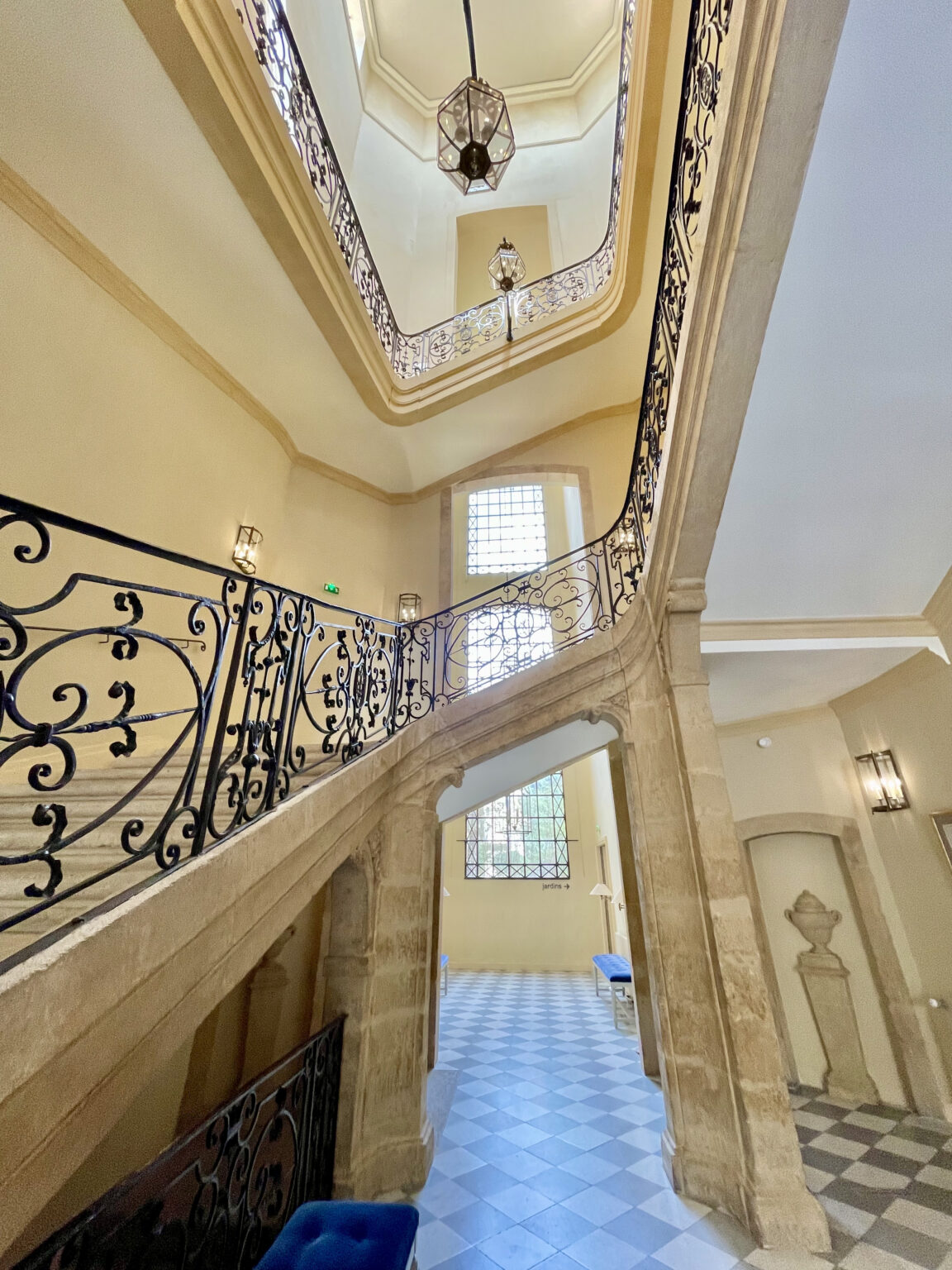
Key figures
Building area: 2,500 square meters
Duration of the project: 18 months
Cost of the restoration: 12.8 million euros
Purchase price of the hotel by Culturespaces from the city of Aix: 10 million euros
310 000 visitors per year
The launch of Caumont Centre d’Art is a new page being written for the Hôtel de Caumont, three hundred years after the laying of its first stone. It is also a real challenge for Culturespaces, which for the first time is opening to the public a place owned by the company.
A new generation of art center is launched, with a program of exhibitions ranging from ancient art to the present day.
The demonstration will be made that an art center can not only be associated with the word “contemporary”.
With two major exhibitions a year, a film on Cézanne in the Aix region, a terrace overlooking the gardens and regular meetings to share art with passion, the Hôtel de Caumont has established its reputation as a lively cultural venue.
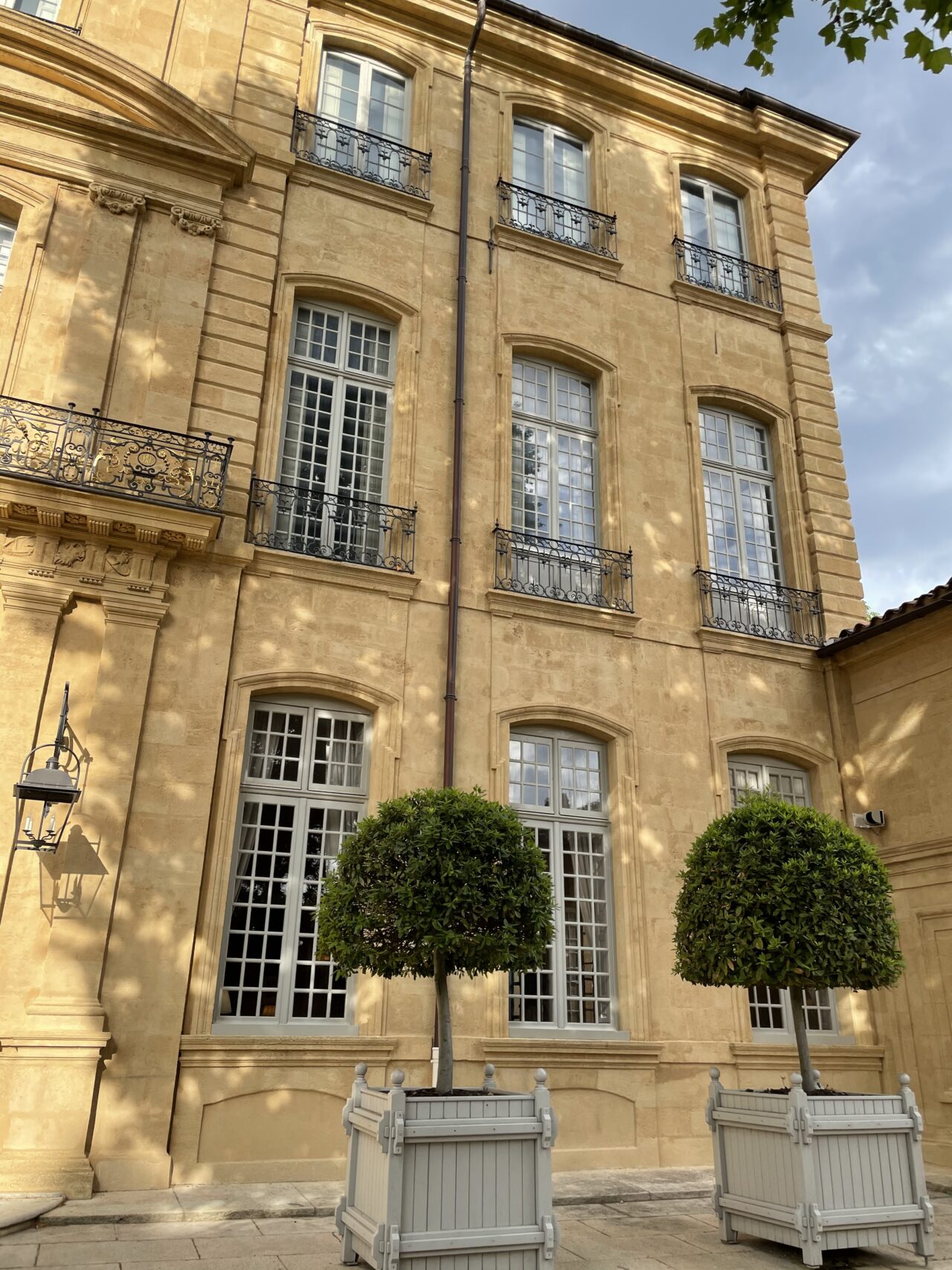
Until October 10, 2021, the works of the French artist of Chinese origin Zao Wou-Ki (1920-2013), realized in collaboration with the Zao Wou-Ki Foundation, are exhibited at the Hôtel de Caumont. The exhibition brings together nearly 80 works from 1935 to 2009 (oil on canvas, watercolors and Chinese ink on paper) from public and private collections. The aim of this ensemble is to bring to light one of the artist’s major creative themes: inventing new pictorial spaces based on his work on color and the representation of light. Light and space are indeed inseparable in his work and allow us to understand his recurring objective of “giving to see” what cannot be seen and which inhabits him, “the space within”.
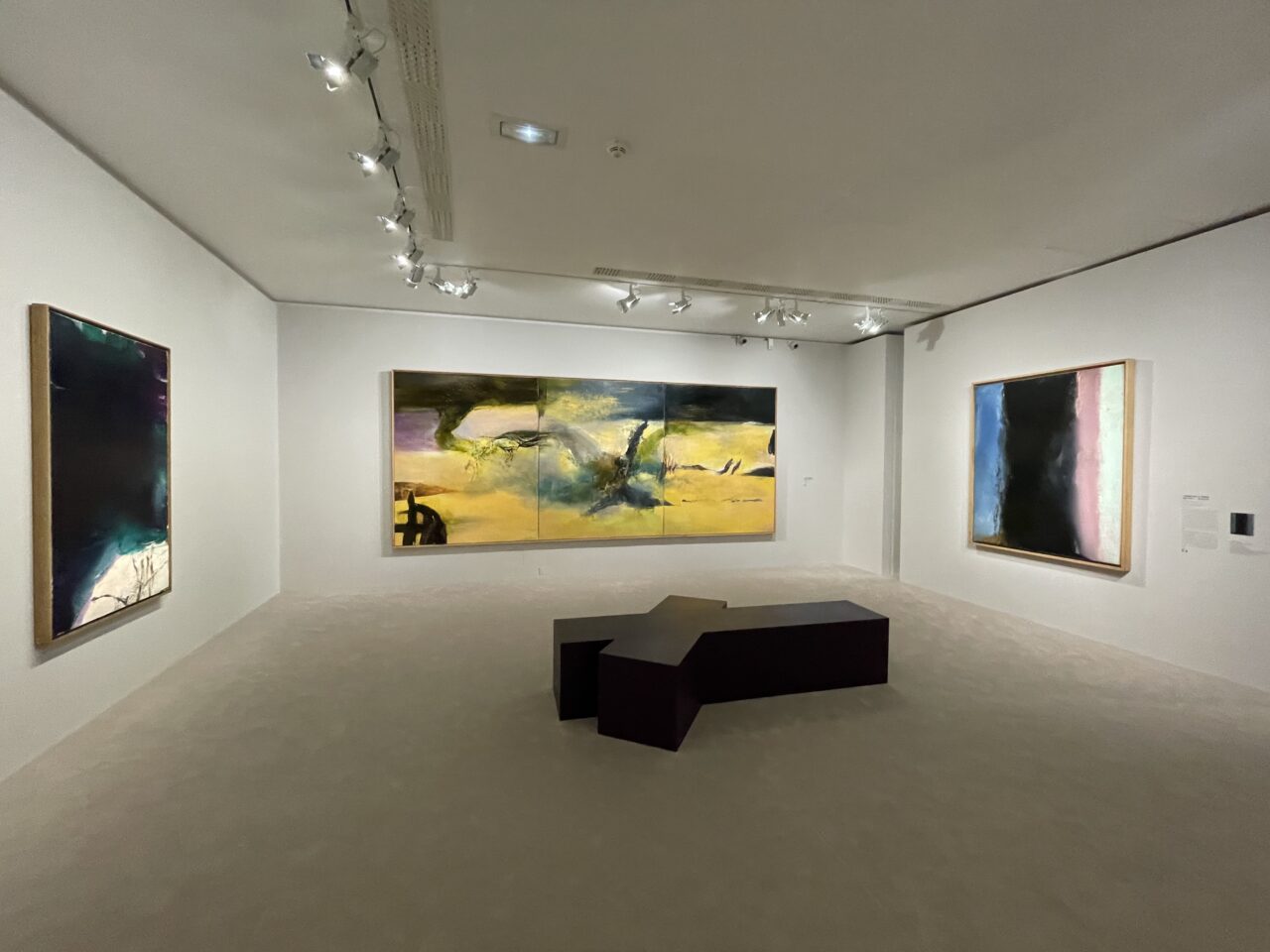
In the period following his move to Paris in 1948, Zao Wou-Ki explored the theme of day and night light in a series of poetic works that simply incorporated the representation of the lunar and solar stars. The transition to abstraction in the mid-1950s through the use of the sign borrowed from Paul Klee, enriches his relationship to light and darkness, expressed then by the play of colored masses, which clash or merge.
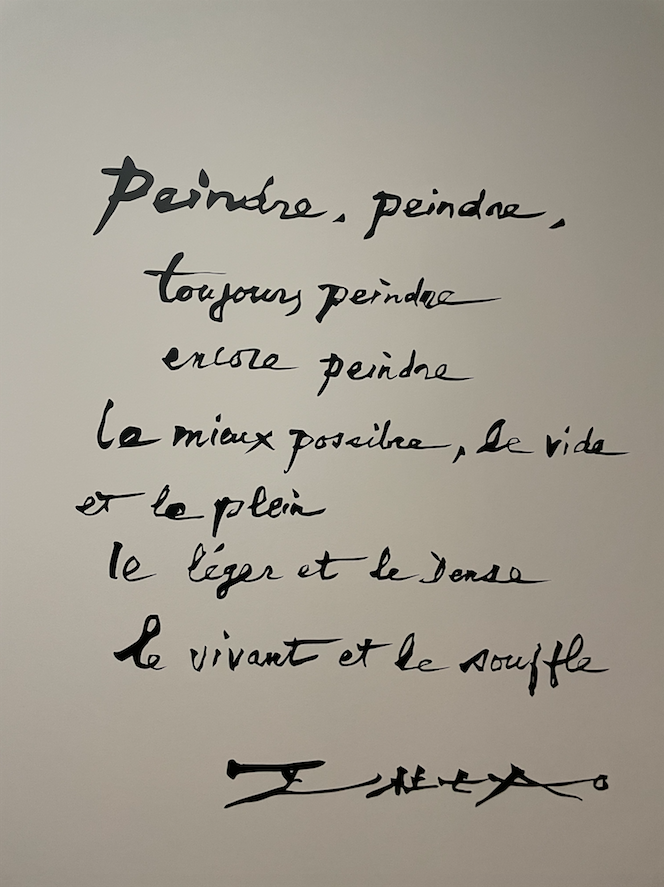
The practice of Chinese ink, thanks to Henri Michaux from 1970, allows him to develop the Chinese tradition. He then began to work on the void, associated with white or reserve, and the full, associated with the black of the ink. This research continues in his painting and makes him discover new spaces.
The works of the 1970s and 1980s refer to a darker side corresponding to periods of suffering and mourning. This back and forth between light and shadow draws its inspiration from the long history of Chinese painting, which seeks the balance of opposites.
Guided at the beginning and until the end of his life by the genius of Paul Cézanne (Paysage Hangzhou, 1946; Hommage à Cézanne, 2005), Zao Wou-Ki was also sensitive to the specific sunlight of southern France. After renting a studio in the Var between 1958 and 1972, where he met with many friends, he accepted a proposal from Josep Lluis Sert, who built him a studio in Ibiza in 1973, a new place for creation.
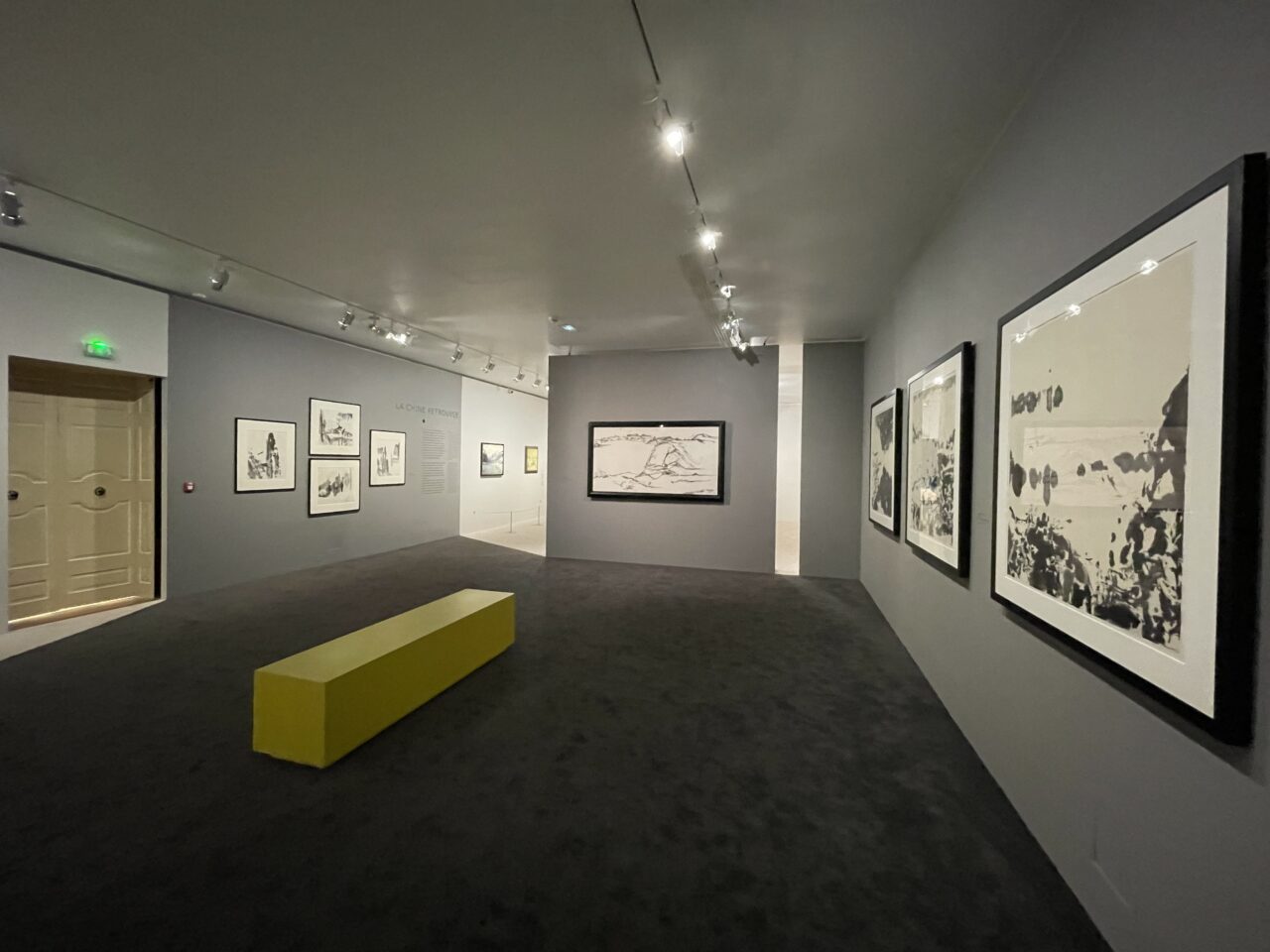
From 2004 onwards, Zao Wou-Ki spent several summers at the Luberon estate of the fashion designer Emanuel Ungaro, who was also very attached to his native town of Aix-en-Provence. There, Zao Wou-Ki worked “on the ground”, a new development for him, and painted a series of watercolors that were presented for the first time at the Hôtel de Caumont. They capture the luminosity and the sometimes flamboyant and sometimes muted colors of the Luberon landscapes. These works express, at the last moment of his life, his unchanging joy of painting.
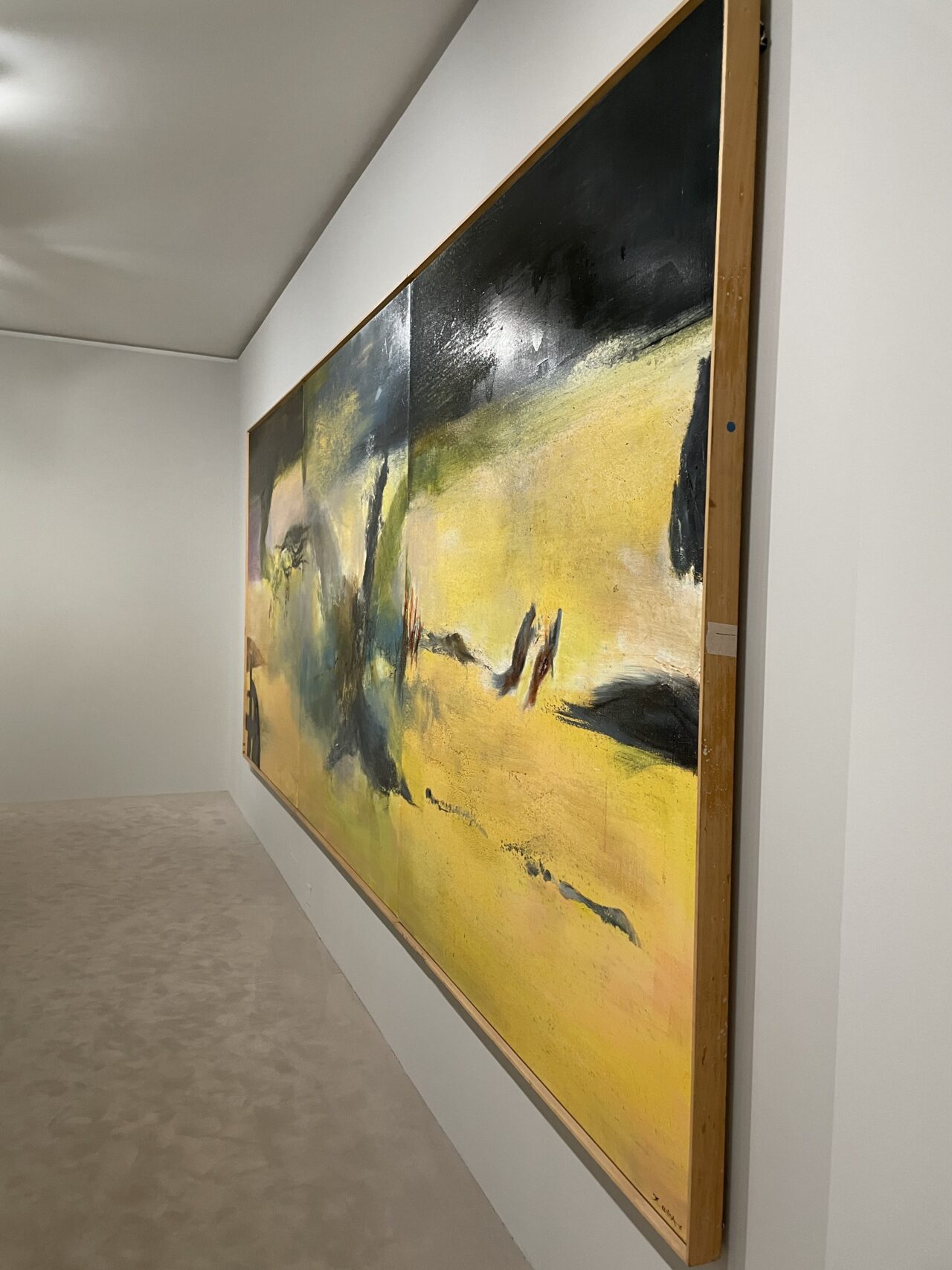
May 19 to October 10, 2021
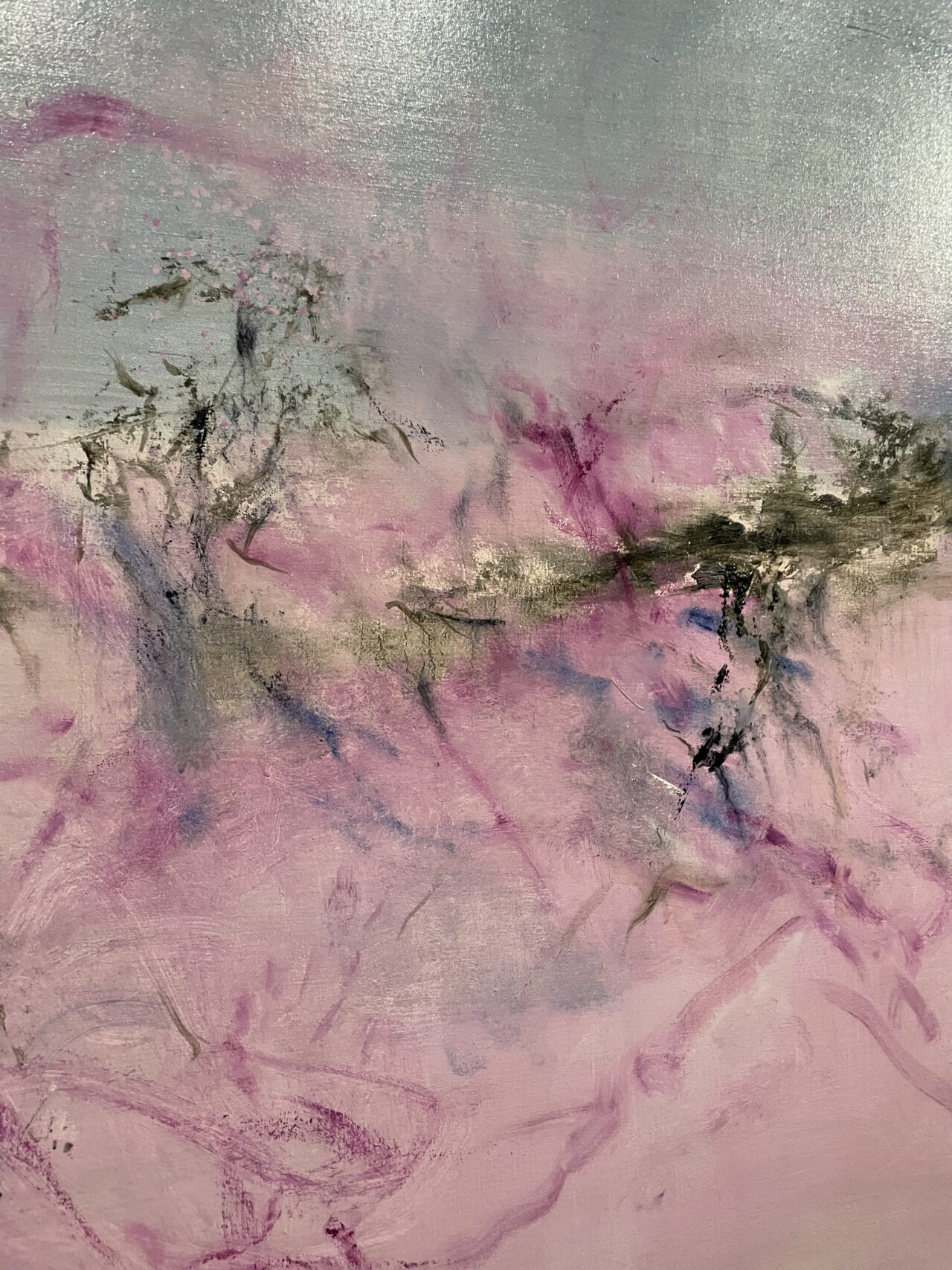
Styles's journal